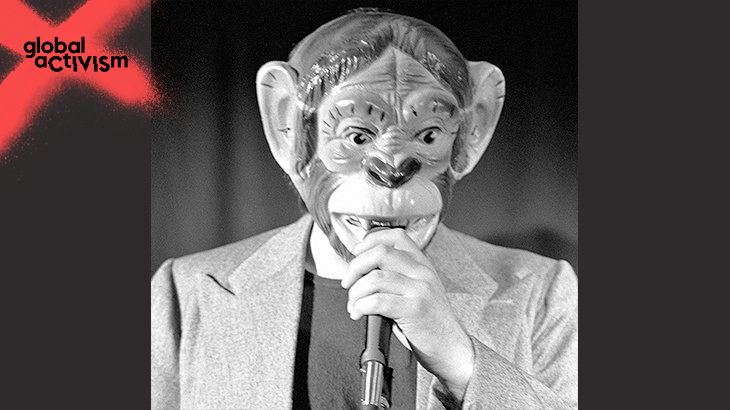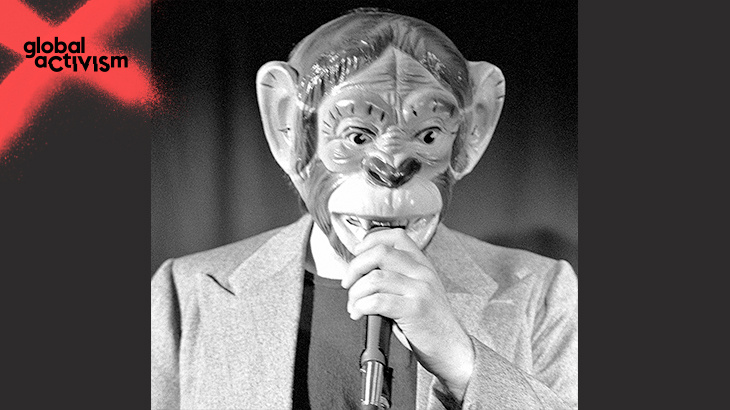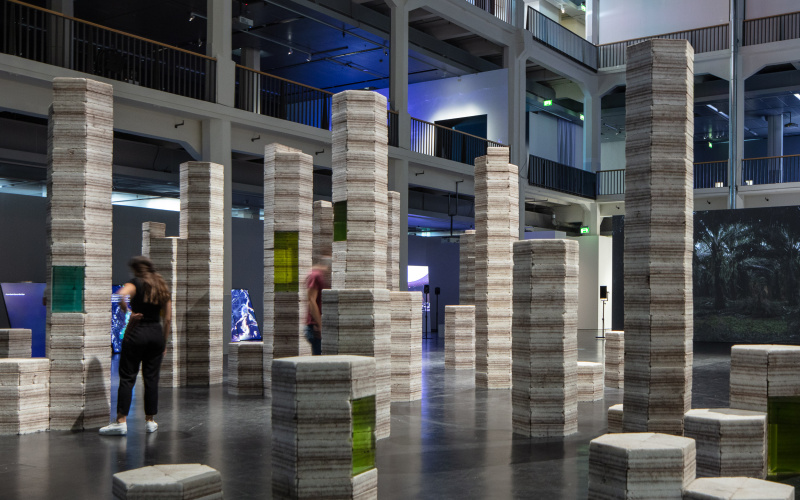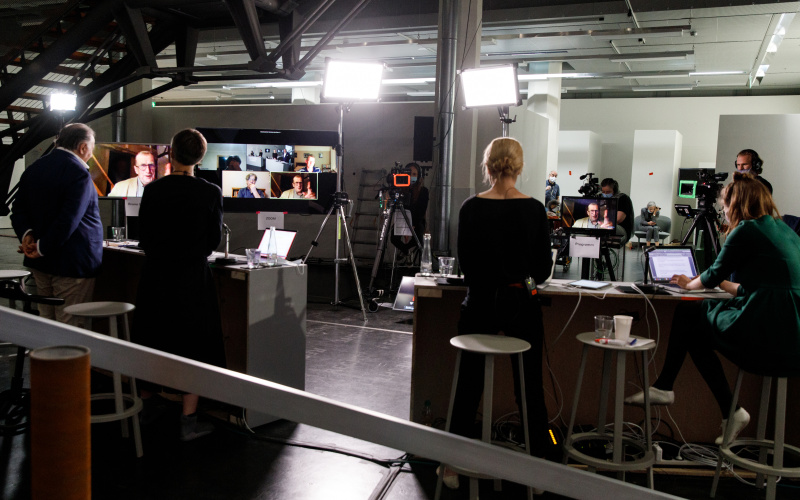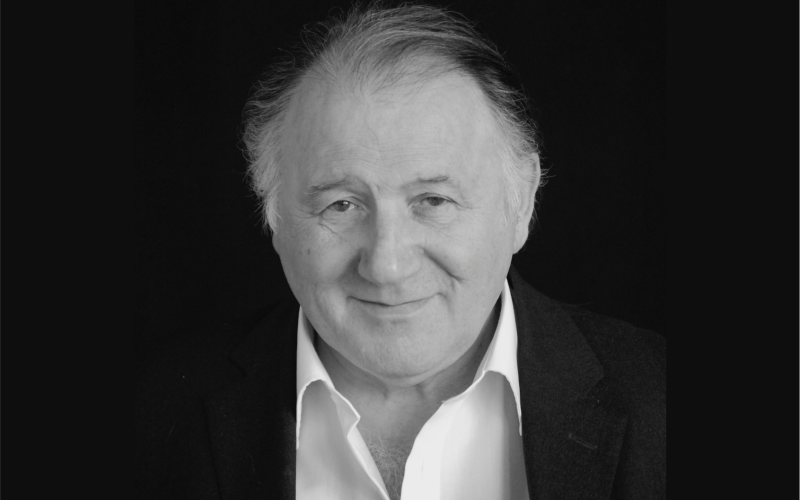Peter Weibel - global aCtIVISm
Globalization and technological development have given rise to civil activism world-wide. We can identify two phases of globalization: the first was the industrial revolution driven by machinery from 1800 onwards, and the second the data-based information revolution that started in 1900. With digitization, the transition from an alphabetic to a numeric code, the technical basis was laid upon which the media became personalized and people networked to a far greater degree than ever before. Every person became a transmitter. Social media created new horizontal and transversal social structures.
People no longer live in a “small-data” environment, in which interaction between them and their environment is limited to a small amount of data, but in a “big-data” environment in which this interaction takes place more or less by the second. In the stimulus-reaction model between man and the environment both the amount of data has increased and data frequency has risen immensely.
In blatant contrast to this daily experience of the reciprocal influence of man and the environment through the new technologies, in a representative democracy citizens are only entitled to exert an influence on the big issues of politics by voting – every four years. In the highly technological lifeworld of the twenty-first century fundamental changes take place not only at an interpersonal level, but also in the relationships between man and the environment, which occasionally seem too much for society to handle. The term used to describe such changes is crisis, from the climate crisis via the finance crisis through to the crisis in democracy (Peter Sloterdijk argues that the state pursues “civic exclusion”). The current protest groups, such as the Indignados, the Occupy movement, and so on, could be said to represent new corrective cultures, which search for solutions to these seemingly intractable crises and the partial inability of politics (the booty of banks) to act.
The new forms of spontaneous mass protests by individuals have shown, especially in the case of the Arab Spring, how at least for brief moments in history, established power systems can be annulled. Problems of democracy and the economy, above all corruption, are also foci of global activist protests just as are a call for adherence to human rights, peaceful solutions for global conflicts, a sound immigration policy, health care, protection of animals and the environment.
In the Anthropocene epoch there are conflicts between the Earth’s friends and foes. As a result, we are seeing efforts to create new tribunals and new contracts between man and nature (for example, under the aspect of sustainability), between generations and nation, citizens and the state, which seem particularly feasible in the digital society. This expansion of the legal sphere has resulted in the creation, amongst other things, of NGOs (non-governmental organizations), which in recent decades have played an important, pioneering and preparatory role for global activism; one need only think of the sensational actions of Greenpeace, Amnesty International, Transparency International, etc., as captured by a global media. Evidently, large portions of society feel the state does not adequately protect citizens’ rights, but on the contrary de facto violates them in some instances. This has prompted citizens to create new organizational forms to tackle this task themselves. Following the “global city” (Saskia Sassen, The Global City, 1991) and “global governance” (Brundtland Report, 1987) a new form of social action is emerging; namely, “performative democracy”, which centers on the “global citizen.” The latter represents vital interests of humanity as a whole, issues that cut across the individual nation states. In other words, global activism is based on “global citizenship.”
Performative interventions by artist groups such as Pussy Riot, in conjunction with the mass media’s dissemination of these events, have revealed how activists can make a genuine contribution to overcoming a crisis situation by bluntly drawing attention to grievances. To some extent the practices of artistic performance and audience participation that have characterized art for sixty years are now invading the sphere of politics. Audience participation in art as a consequence of the performative turn has probably created the historical prerequisites for the new civic participation in democracy. The art of the interactive media has anticipated social models.
With the exhibitions Net_Condition (1999/2000), CRTL [Space]. Rhetorics of Surveillance from Bentham to Big Brother (2001/2002), and Making Things Public. Atmospheres of Democracy (2005) at an early date ZKM pointed to the opportunities and risks that the digital society offers. Moreover, for years ZKM has presented practices of artistic performance and the participation of the public. These practices have now evidently spilled over into the sphere of politics. After all, on the one hand people talk about the crisis in democracy, indeed even of “post-democracy.” And yet, on the other, a whole host of civic activist movements are on the rise all over the world. The slogan of the Boston Tea Party (1773), which ultimately led to the outbreak of the War of Independence in America in 1775 was: “No taxation without representation.” Today’s citizens seem to be demanding “no taxation without participation.” The exhibition global aCtIVISm focuses firmly on this new civic involvement. As the emphasis of the word CIVIS in “aCtIVISm” shows, the thrust is the practical and performative development of the difference between citoyen and bourgeois. The politicians of modern democracy are mistaken in thinking that people are bourgeois. In reality, in order for democracy to remain viable it needs the active citoyen. This is why the American founders of the democracy theory, from Walter Lippmann to John Dewey, repeatedly invoke the vital function of the citizen.
The word citoyen (derived from cité “town,” Latin civitas “citizenship,” “state”) refers to the citizen, who in the tradition and spirit of the Enlightenment takes an active and responsible part in the community and shapes it, based on the values of the French Revolution: liberté, egalité, fraternité. Jean-Jacques Rousseau wrote: “The citoyen is a highly political being, who does not express his political interest but that of the common good. However, this is not restricted to the sum of individual expressions of will, but extends beyond it.” (The Social Contract or Principles of Political Right; French original: Du Contrat Social ou Principes du Droit Politique, 1762). He continues: “The true meaning of this word has almost completely disappeared of late; most people confuse town (ville) and polis (cité), city dwellers (bourgeois) and citizens (citoyen).” Immanuel Kant also refers to this important distinction in his writings. The free will of the citizen in the sense of Hegel’s philosophy of law must not be reduced to the free choice between several options determined by politics, but rather consists of the citizen making proposals to politics. A new language and rhetoric of politics is developed, which is composed of elements that have both a historical foundation and are also based on new technologies. Defining this new language simply as a protest fails to recognize the innovation involved, for what we are experiencing in reality is the invention of the citizen. In the same way that “inventing the people” (Edmund S. Morgan, Inventing the People, 1989) was necessary in order to form a representative democracy in the first place, today it requires the invention of the citizen by the citizen in order to advance a jeopardized democracy. So it would be wrong to talk about pure protest movements; what we have are anticipatory democracy movements.
The exhibition global aCtIVISm attempts to identify the approaches, tactics, strategies, and methods of what I call “performative democracy,” and with the help of photos, films, videos and blogs, social media and other mass media documents seeks to chart the course of global activism. The latter is expressed in demonstrations in public places, occupation of public institutions, barricades, strikes, leaking, clowning, mourning, pray-ins, teach-ins, documentation in social media, the placing of posters and banners, graffiti and street art, the distribution of flyers, theater actions, flash mobs, media jacking, petitions and public letters, art works, reenactments, toolkits, Internet activism. This fusion of activism and art, or “Artivism” is arguably the first new art form of the twenty-first century.
During the exhibition the blog is intended to foster a discussion on the key topics of global activism, interaction on spaces and the public realm as places of protest, institutions and networks of activism, the tactical media and protest tools for organizing and designing actions, Occupy as a reaction to the global economic crisis, and state surveillance. Dietrich Heißenbüttel, who has long occupied himself with global, artistic forms of activism will moderate and edit the blog.
Further information on: www.global-activism.de
About the author
Born in Odessa in 1944, Peter Weibel studied literature, medicine, logic, philosophy, and film in Paris and Vienna. He became a central figure in European media art on account of his various activities as artist, media theorist, and curator. Since 1984, he has been a professor at the University of Applied Arts Vienna. From 1984 to 1989, he was head of the digital arts laboratory at the Media Department of New York University in Buffalo, and in 1989 he founded the Institute of New Media at the Städelschule in Frankfurt on the Main, which he directed until 1995. Between 1986 and 1995, he was in charge of the Ars Electronica in Linz as artistic director, from 1993 to 1999 he commissioned the Austrian pavilions at the Venice Biennale, and from 1993 to 1998 he was chief curator of the Neue Galerie Graz. Since 1999, Peter Weibel is Chairman and CEO of the ZKM | Center for Art and Media Karlsruhe. In 2007, he was awarded an honorary doctorate by the University of Art and Design Helsinki. The following year he was artistic director of the Seville Biennial (BIACS3), and he was awarded with the French distinction “Officier dans l’Ordre des Arts et des Lettres.” In 2009, he was appointed a full member of the Bavarian Academy of Fine Arts Munich. In the same year, he was awarded the Europäischer Kultur-Projektpreis [European Cultural Project Award] of the European Foundation for Culture. In 2011, he was artistic director of the 4th Moscow Biennale of Contemporary Art. In 2013 he was granted an Honorary Doctorate from the University Pécs, Hungary.
Translated from the German by Jeremy Gaines
Category
News Category
- tracks & records
